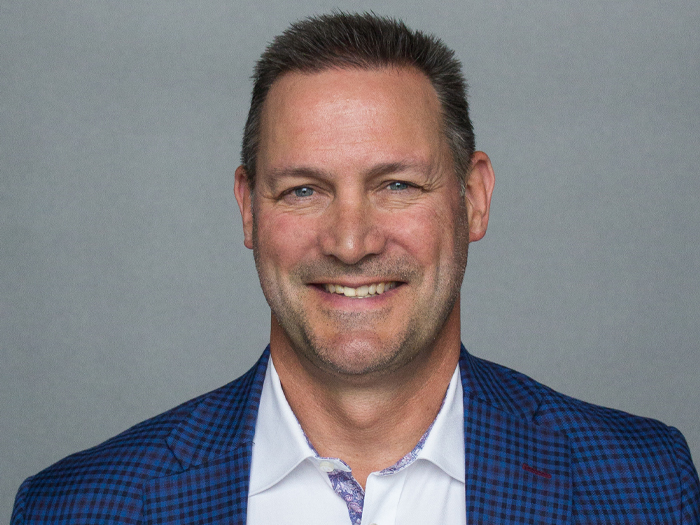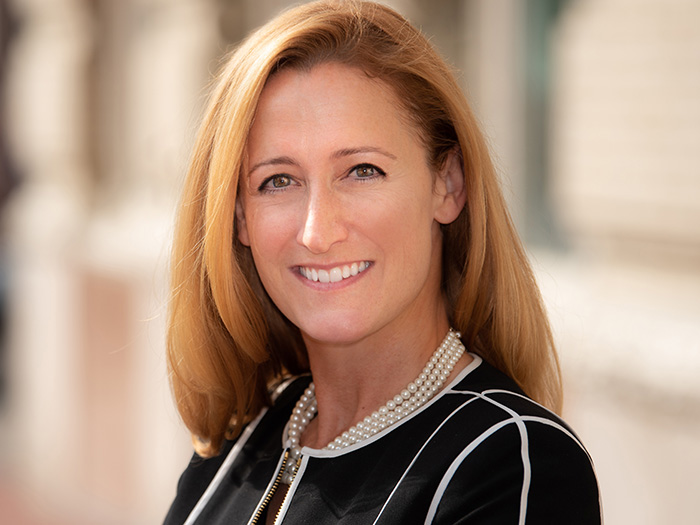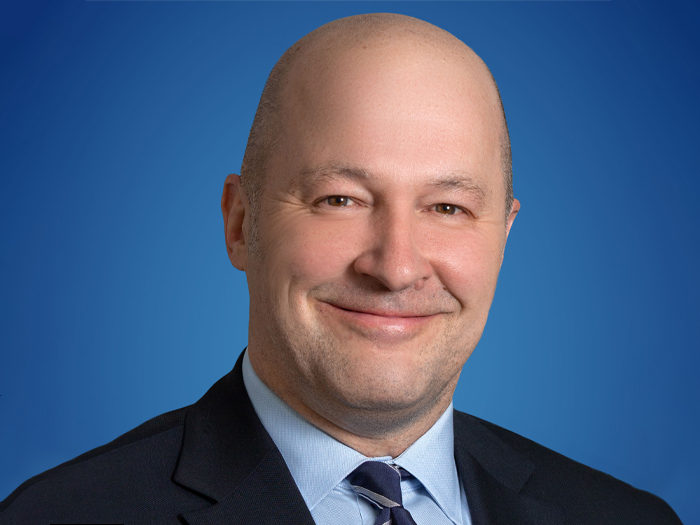9 Questions for Jencap’s Bruce Peddle

In June, 2024, Dan Reynolds, the editor-in-chief of Risk & Insurance, caught up with Bruce Peddle, president of Jencap Insurance Services. What follows is a transcript of that discussion, edited for length and clarity.
Risk & Insurance: What are some of the exciting opportunities you see for Jencap in the coming year?
Bruce Peddle: At Jencap, the opportunities are endless. As a company that has been acquisitive over the past seven or eight years, we have so much potential for growth and development.
We’re launching new programs, such as a construction program specific to wraps and a new energy practice. If you’re a producer at Jencap and want to grow your book, you can do it more quickly here than in a company where your competition sits next to you, or in a smaller shop that lacks the tools we have.
Moving to one system over the next 12 months will allow us to harness the power of data in one place. This will enable us to create more meaningful programs with our carrier partners and better assist our agents. It will also provide more opportunities for our staff, such as the ability for someone in Detroit to back up a colleague in Atlanta if needed.
Another exciting area is our early career talent attraction. Our internship program, recent graduate program and various training programs are bringing in young people with energy and ideas. It’s really cool to see the culture change in offices that previously had no young people and now have six or seven, bringing a new dynamic to the workplace.
R&I: What do you perceive as some of your more significant challenges as a business leader?
BP: Change management is always a challenge, especially when you’re a dynamic, rapidly growing entity like Jencap, bringing so many new things to the table across the board. Making sure your message is relayed effectively to your direct reports, who then relay it to their teams, is the biggest challenge.
It’s interesting how the perception of change varies. For some, it’s too fast, while for others, it’s not fast enough. Rarely does a one-size-fits-all approach exist. Depending on the individual and the message, the reception can be either very positive or very negative.
Bringing together 40 to 50 disparate offices, each with their own pride of ownership and history of success, presents another challenge. When introducing change, it’s crucial to convey that their past methods weren’t wrong, but rather that what worked for a 20-person office may not necessarily work for a 1,200-person organization. The delivery of this message must be thoughtful and prepared, considering each office’s unique perspective and potential perception of the change as a step forward or backward.
However, these challenges are ultimately opportunities, which is why I believe it’s such an exciting time to be here at Jencap.
R&I: What qualities do you look for when recruiting talent at Jencap Insurance, and how would you describe the company’s evolving culture?
BP: At Jencap, attitude is the key factor when it comes to recruiting talent. While we appreciate risk and insurance management majors, we don’t exclusively seek them out. Instead, we aim to bring in a variety of individuals with different perspectives and approaches to problem-solving.
We believe that diversity in thought and background contributes to our success. However, it’s crucial that our employees understand the importance of following certain procedures and processes. Jencap’s culture is evolving, and collaboration is at the heart of where we’re seeing the best results.
We encourage a high level of teamwork, especially in smaller offices where employees were previously expected to be jacks-of-all-trades. Those who prioritize their own interests over the team’s tend not to thrive in our environment. As we move forward, we’re focusing on fostering a collaborative atmosphere where everyone works together towards common goals.
R&I: How is technology, particularly artificial intelligence and predictive analytics, gaining traction and proving useful in your business?
BP: Our best successes to date have been on the back office side of things. While we are also working on the more headline-grabbing aspects, we’ve had meaningful impacts on the back end, particularly in small business where we move a lot of volume through.
We have been very successful in policy document acquisition. By using robotic process automation (RPA), we can automate the process of grabbing documents in whatever way a carrier might be delivering them to us, whether internally, through online sites, emails or links. If it’s repetitive, we can grab those documents and automatically file them.
In some cases, we can even get them out to our agents automatically. We’ll get them through the night, and our agents can access them via their inboxes or portals at their leisure before we get in in the morning. This is super important from a small business perspective because it’s all about ease of doing business.
Questions about the location of endorsements, policies or invoices disappear because they know it’s already there. If they didn’t get it, they know to ask the question because something’s wrong.
R&I: What do you see as the biggest pain points or worries for insureds when it comes to risk, whether emerging or existing risks?
BP: I believe that one of the primary concerns for insureds is the constantly evolving risk landscape. As new risks emerge and existing risks change, it can be challenging for insureds to stay ahead of the curve and ensure that they have adequate coverage in place.
A significant pain point is the complexity of insurance policies and the language used within them. Many insureds struggle to fully understand the terms and conditions of their coverage, which can lead to confusion and potential gaps in protection.
Additionally, the cost of insurance can be a major worry for insureds, particularly as risks become more prevalent and severe. Balancing the need for comprehensive coverage with the desire to keep premiums affordable is an ongoing challenge.
Over the past couple of years, wind coverage on any coast in the U.S. has been a significant pain point. We experienced accounts renewing where we could not or did not write the wind coverage, and they went to the Florida pool instead. The cost of their insurance without wind was the same as it was previously with wind, and then they had to pay whatever additional charges the pool imposed.
Now, we’re also discussing nuclear verdicts and social inflation, which are hitting the casualty marketplace hard. It’s interesting to see the casualty marketplace repeatedly say they’re in a good spot, only to come out of the pandemic and find that as the courts start moving again, society’s view on those risks and what insurers should be rewarded with has changed.
The number of nuclear verdicts across the country has skyrocketed in the past two to three years. The increase has been exponential.
It’s a concerning development that warrants close attention from the insurance industry and society as a whole.
R&I: What are some of the key pain points that insurance carriers are currently facing in the marketplace?
BP: One significant pain point for carriers was the need to bolster reserves from around 2015 through 2019. Many carriers found themselves in a challenging position and had to take steps to strengthen their reserves during this period.
This trend has been observed across the marketplace. The impact of this issue is twofold. First, it directly affects the insurers involved in those claims. Second, even if an insurer was not directly involved, they may still face indirect consequences such as increased rates and potentially weaker coverage offerings.
R&I: What were some of the most memorable people, events or circumstances in your career that significantly influenced your progression as an executive and the career you built?
BP: One of the most impactful aspects of my career has been learning from my failures and the failures of others around me. This is particularly true when it comes to hiring and retention practices.
In my first startup, I made some terrible hires and quickly learned the negative impact they can have on an entire organization. This experience drove me to invest significant time and effort into learning how to recruit successfully and improve my hit ratio. While you can never get every hire right, my batting average has dramatically improved over time.
By implementing effective hiring practices, we were able to build a strong team at my legacy entity, which I sold to Jencap at the end of 2018. Many of those team members are still within that division, which continues to be very successful and grow nicely. Some individuals have even taken on expanded roles within Jencap, such as Katherine Smith, who now handles branding and communications for the entire company, overseeing a team of 1,200 people, compared to the 30 she previously managed.
Our success in finding and retaining great people was not accidental. It was a direct result of my early failures in hiring, which motivated me to improve and, in turn, helped the team become much better at it as well. This experience exemplifies how learning from mistakes can lead to significant growth and positive outcomes.
R&I: Who was an early mentor that had a significant impact on your career, and what did you learn from them?
BP: My earliest mentor was David Pennington, who recruited me out of the parent company in Bermuda to move to Atlanta. He was the first person I worked with who had a true vision of where he wanted to go beyond just day-to-day tasks.
He painted a compelling vision, assembled a strong team to execute it, and brought me along on that journey. David was way ahead of his time with technologies in the late 1990s, such as online rating for agents, which was very bleeding-edge at the time.
I also learned valuable lessons from the parent company, where I had access to the C-suite and saw how they operated. They ultimately went bankrupt due to a lack of respect for their business and trading partners, particularly their reinsurance partners. This taught me the importance of maintaining strong relationships with key trading partners.
R&I: What are your thoughts on the importance of knowledge transfer, particularly the historical knowledge within the insurance industry?
BP: Knowledge transfer is absolutely critical in our industry, especially when it comes to historical knowledge. The insurance sector has a rich history, and there are valuable lessons to be learned from the past.
As we bring in new talent and collaborate with younger generations, it’s essential that we find effective ways to pass on this knowledge. This ensures that the industry continues to evolve and innovate while still being grounded in the wisdom of experience.
Personally, I find it incredibly rewarding to share my own experiences and insights with others. It’s not just about imparting information, but also about fostering a culture of continuous learning and growth. By actively engaging in knowledge transfer, we can build a stronger, more resilient industry that is well-equipped to face the challenges of the future.
Knowledge-sharing between experienced and younger individuals is a critical aspect of our organization’s success at Jencap. We have a strong culture of mentorship and collaboration that facilitates the transfer of knowledge across generations.
Our experienced team members are encouraged to take on mentorship roles, sharing their insights and expertise with younger colleagues. This occurs through both formal mentorship programs and informal interactions, such as team meetings and one-on-one discussions.
We also have a robust training and development program that pairs younger employees with seasoned professionals. This allows for hands-on learning and the opportunity to absorb the tacit knowledge that comes from years of experience in the industry.
Moreover, we foster a culture of open communication and knowledge-sharing. Our leadership encourages all employees, regardless of their level of experience, to contribute ideas and insights. This creates an environment where younger team members feel empowered to ask questions and learn from their more experienced colleagues.
By prioritizing knowledge-sharing across generations, we ensure that the valuable insights and expertise of our seasoned professionals are passed down to Jencap’s next generation of leaders. This not only supports the growth and development of our younger team members but also strengthens the overall knowledge base and capabilities of our organization.
Beyond our training programs, which range from early career development to specific skills like Excel and becoming a transportation expert, we also have mentoring programs in place. Interns, for example, are always paired with a mentor to ensure methodical knowledge transfer.
However, we’ve recognized that while working from home offers great flexibility, it makes knowledge transfer nearly impossible on a consistent basis. Just yesterday, a former summer intern who recently graduated started with us full-time. He was thrilled to see more people in the office compared to last summer.
Young people, especially those who experienced isolation during high school or college due to the pandemic, are eager for in-person interaction. They don’t want to continue being isolated, and every individual has expressed a desire to be in the office for this reason. The challenge now is to encourage more experienced employees to come into the office as well to facilitate this critical knowledge transfer. &










